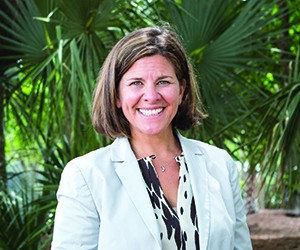If you’re not already using some form of social media before, during and after your meeting or event, you’re already behind the curve. However, simply creating a social media account and posting blindly without a well-crafted game plan in place isn’t going to impress anyone—especially attendees.
Meetings Today spoke with some innovators in the meetings and events industry about their social media strategies that go beyond the basics to help elevate your planning experience.
Before You Get Started
The first part of any good social media strategy is not “coming up with a great hashtag” (though all of our experts agreed you need to use at least one), it’s simply taking a step back and examining the demographics of your event and figuring out what medium can best engage your audience, whether it’s more social or visual, etc.
“Maybe you have an executive who’s so excited about social media … ‘What’s our hashtag? What are we doing? Get us on Facebook.’ As a planner it’s your responsibility to slow down the social media conversation and create a thought-out plan—pre-event, during and post-event,” says Amanda Young, Americas event leader with General Electric (GE) Healthcare. “And if you’re not taking the time to put together that post-event plan, then maybe it’s not worth putting that much time or effort into.”
Before your meeting or event begins, social media can be used to build up hype for your event, share important information and tools (such as your event app), and notify attendees of important updates or exciting speakers, and directly communicate with them in a personalized way.
Another important initial step is to identify who will be responsible for monitoring your social feed and the amount of time they will have to do so, whether it’s all on you personally or a combined effort.
“I’ve seen people throw out a hashtag that doesn’t have someone dedicated to monitoring it, which is a huge mistake, because you gain so much real-time information,” says Brandt Krueger, an event technology consultant, speaker and educator. “Social media is the cheapest and easiest way to get real-time data about what your attendees are thinking, and it’s especially helpful for planners on a budget.”
Young adds that monitoring the hashtag after an event is over can be just as useful, if not more so, than conducting a post-event survey, as she says it’s hard to get honest feedback anymore when using traditional survey methods.
Picking Your Platform
Odds are most planners (and Internet users) have at least heard of Facebook, Twitter, Instagram, LinkedIn and Pinterest. Then you’ve got YouTube and the recently rebranded G+ (Google Plus). And let’s not forget about streaming apps Periscope and Meerkat, or the increasingly popular Snapchat video messaging service.
So you absolutely have to have a presence on each service, right? Not unless you’re a one-person event planning machine or one of the lucky ones with a large staff of helpers. In fact, it could hurt you.
“Some of it is just being realistic, if you don’t have a person to dedicate to a particular social media platform, maybe you shouldn’t be on it,” Brandt says.
A good way to weed out the social media platforms you don’t need to be on is by analyzing the demographics of your event and seeing where attendees are having the most conversations. Not so surprisingly, Twitter topped pretty much everyone’s list for most important social platform, due to its ability to easily follow along with hashtags and directly engage with speakers and attendees.
“They’re all different right? For certain types of events Facebook really is where your groups are, so you’ll definitely want to have a presence there, but that tends to be where the focus is more on social,” says Tahira Endean, CMP, an event producer with the BC Innovation Council, who was gearing up for the 2016 #BCTech Summit from Jan. 18-19 in Vancouver, B.C., at the time of our interview.
More surprisingly, Instagram easily took the No. 2 spot on our experts’ list for most effective social media meeting platform, especially during the event, when images can be taken and even pushed to Twitter. And LinkedIn possibly edged out Facebook in practicality, but only for more professional posting.
What about Pinterest and Snapchat? The majority of planners agreed these were best left to the social media mavens who know their attendees are active on these platforms. And Periscope and Meerkat’s live-streaming abilities have the strong potential to be used creatively for meetings and events, but only if you have the proper time to dedicate to them while maintaining other important feeds. Some events also discourage video streaming.
PageBreak
Hashing Out the Details
Don’t discount the importance of the aforementioned hashtag, which gives you the power to monitor the real-time information that Brandt and other experts mentioned was so important.
Tess Vismale, tech evangelist at Dahlia+, who is in the business of helping planners learn about and successfully adopt new technology, among other elements, noted the importance of creating an “anchor hashtag,” or the primary hashtag that connects all social media mentions of your event in one place.
“For instance, PCMA uses #PCMACL as its anchor hashtag for its annual Convening Leaders event and that’s where you’ll see all conversations dealing with Convening Leaders, period,” she says.
Vismale also mentioned that some events utilize a “context hashtag” that can help to further identify what the post is about … for instance, if the overarching theme is “Big Data,” tell your attendees and speakers they can use the hashtag #BigData in addition to the anchor one whenever the topic arises.
If you’re just getting started in the hashtag world, focus in on the anchor hashtag, as to avoid the confusion of promoting two hashtags. Vismale adds that the ideal anchor hashtag should be as short as possible and representative of the event. You don’t need to include the year in the hashtag, as it just creates more work and can even discourage attendees from continuing the dialogue post-event.
And make sure to do your homework and research your hashtag before committing to it, as you might find that what you thought was the perfect hashtag is actually already in use by someone else.
“As soon as you publish a hashtag and ask people to start communicating on it, then you shouldn’t ever change it again,” Young, with GE Healthcare, says. “Well, unless your event has the same name as your organization and a few other specific exceptions … but in general you want to leave it alone to avoid confusion.”
Young and the other planners we spoke with also mentioned the importance of promoting your hashtag and encouraging its use among attendees, while also getting speakers and other key players to use it in a way that is convenient for them.
“The easiest way to start is to engage your speakers,” Young says. “Build in a clause for your speakers into their contracts that says ‘We get four social media posts,’ or some sort of guarantee.”
Insider Social Strategies
So now that you’ve identified your group’s demographics and the social platform(s) they use most, while also coming up with a pre-, during and post-event plan, here’s a few more insider tips that might help you out, no matter what platforms you decide to run with for your next meeting or event.
Social media is becoming an increasingly visual medium, especially on Twitter, Facebook, Instagram and Pinterest. Young mentions that there’s no shame in “baiting” attendees to take photos or share posts with the use of inventive props.
“I think you have to build elements into your event—and I know this sounds so hokey—but you need to build things that people are going to want to take pictures with or in front of, but it can’t be forced,” Young says. “Set up [the company] logo and make it out of flowers, like some cool, artistic thing, and people start taking pictures with it and I think that that adds to the experience of the conference.”
Meanwhile, Krueger gave advice that reaches across all platforms.
“In general, the advice that I give across all platforms is be a person, don’t be an entity, don’t be a company, have a person that’s behind your social media efforts and don’t be afraid to let that person have a voice,” Krueger says. “Nobody wants to interact with an organization, they want to interact with a person. And then actually interact. Ask people questions. If someone says something about the food, ask them what they didn’t like about it, if someone says it’s too hot in there, let them know you’re working on it. You can’t just be listening. You have to actually be engaging and talking to people.”
And perhaps the most important piece of advice all of our experts offered up for planners tackling the social media and tech realms is to not be afraid to try new things or even fail every now and again.
“Honestly, you just have to do it [be active on social media], but people just aren’t,” Endean says. “Like ‘I don’t have time, I’m scared of it.’ Don’t be scared of it, just do it. No excuses. I have had tons of amazing opportunities and made great friends all through social media that I would have not met or had otherwise.”
FREE UPCOMING WEBINAR
Are You Safe? (No You're Not!):
Cybersecurity and the Hospitality Professional
Feb. 24, 2016 | 1:00 p.m. EST
www.MeetingsToday.com/Webinars







